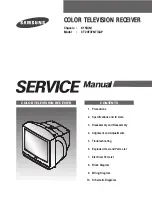
132
Net/USB (DTR-9.9 only)
—Continued
USB Mass Storage Device Requirements
• The AV receiver supports USB devices that support
the USB mass storage device class.
• Playback may not be possible with some USB devices
even if they conform to the USB mass storage device
class.
• USB devices formatted with the FAT16 or FAT32 file
system are supported.
• If the storage device has been partitioned, only music
files in the first partition can be played.
• Each folder may contain up to 500 music files, and
folders may be nested up to eight levels deep.
• Digital audio signals are not output by the digital out-
puts when playing music files.
• USB hubs and USB devices with hub functions are not
supported.
Server Requirements
The AV receiver can play digital music files stored on a
computer or media server and supports the following
technologies:
• Windows Media Player 11
• Windows Media Connect 2.0
• UPnP AV-compatible media server
• DLNA-compatible media server
Windows Media Player 11 and Windows Media Connect 2.0
can be downloaded for free from the Microsoft Web site.
• The computer or media server must be on the same
network as the AV receiver.
• Each folder may contain up to 500 music files, and
folders may be nested up to eight levels deep.
• Digital audio signals are not output by the digital out-
puts when playing music files.
Network Requirements
■
Ethernet Network
The AV receiver’s Ethernet port supports 10Base-T. For
best results, a 100Base-TX switched Ethernet network is
recommended. Although it’s possible to play music on a
computer that’s connected to the network wirelessly,
playback may be unreliable, so wired connections are
recommended.
■
Ethernet Router
A router manages the network, routing data and supply-
ing IP addresses. Your router must support the following:
• NAT (Network Address Translation). NAT allows sev-
eral networked computers to access the Internet simul-
taneously via a single Internet connection. The AV
receiver needs Internet access for Internet radio.
• DHCP (Dynamic Host Configuration Protocol).
DHCP supplies IP addresses to network devices,
allowing them to configure themselves automatically.
• A router with a 100Base-TX switch built-in is recom-
mended.
Some routers have a modem built-in, and some ISPs
require you to use specific routers. Please consult your
ISP or computer dealer if you’re unsure.
■
CAT5 Ethernet cable
Use a shielded CAT5 Ethernet cable (straight-type) to
connect the AV receiver to your home network.
■
Internet Access (for Internet radio)
To receive Internet radio, your Ethernet network must
have Internet access. A narrowband Internet connection
(e.g., 56K modem, ISDN) will not provide satisfactory
results, so a broadband connection is strongly recom-
mended (e.g., cable modem, xDSL modem, etc). Please
consult your ISP or computer dealer if you’re unsure.
Notes:
• To receive Internet radio with the AV receiver, your
broadband Internet connection must be working and
able to access the Web. Consult your ISP if you have
any problems with your Internet connection.
• The AV receiver uses DHCP to configure its network
settings automatically. If you want to configure these
settings manually, see page 138.
• The AV receiver does not support PPPoE settings, so
if you have a PPPoE-type Internet connection, you
must use a PPPoE-compatible router.
• Depending on your ISP, you may need to specify a
proxy server to use Internet radio. If your computer is
configured to use a proxy server, use the same settings
for the AV receiver (see page 138).
Minimum system requirements for Windows
Media Player 11 (for Windows XP)
Operating system
Windows XP Home Edition (SP2), Windows XP Profes-
sional (SP2), Windows XP Tablet PC Edition (SP2), Update
Rollup 2 for Windows XP Media Center Edition 2005
(KB900325), October 2006 Update Rollup for Windows XP
Media Center Edition (KB925766)
Processor:
233 MHz Intel Pentium II, Advanced
Micro Devices (AMD), etc.
Memory:
64 MB
Hard disk:
200 MB of free space
Drive:
CD or DVD drive
Modem:
28.8 kbps
Sound card:
16-bit sound card
Monitor:
Super VGA (800 x 600)
Video card:
64 MB VRAM, DirectX 9.0b
Software:
Microsoft ActiveSync (only when
using a Windows Mobile-based
Pocket PC or smartphone)
Web browser:
Microsoft Internet Explorer 6 or
Netscape 7.1
Содержание DTR-8.9
Страница 1: ...DTR 8 9 Instruction Manual AV Receiver DTR 9 9...
Страница 161: ...161 Memo...
















































